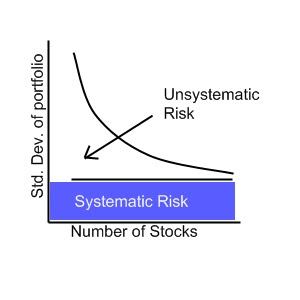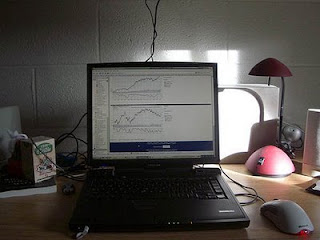There is a theory or belief particularly in the minds of intelligent people who do not easily enter into stock trading. These people not only think that someone loses when someone gains, they also try forcing that belief on to others. Their perspective about the stock market is no different from a gambling casino. You need to clear yourself off this belief before you can become a successful stock trader.
 Image Source
Image SourceIn my experience as a trader, I have met people with several different perspectives on the stock market. Some people think of it as a better place to invest and earn money in the long term. Some people are not even aware of it. Some people know there is one but don’t know much about it and do not even try to remember when they are given little information. These kind of people, lacking focus, waste a great deal of my time and I often avoid giving any information to them.
Intelligent People too Tend to have False Beliefs
There are other people who know more about the market but they have their own in built theories about them. These people are intelligent in their professions but can’t appreciate the variety and uniqueness of other professions. They go with their own assumptions without taking a step further to understand the reality. It was such a person when I met I had to dwell upon this theory.
The stock market is very different from a gambling casino. The simple fact, that gambling casinos are illegal in many countries but not the stock markets are, can tell a whole lot about their difference. The gambling is made illegal simply because this theory works at its root. You cannot make profit without somebody paying for it. You may have luck or whatever you say the reason for it, but that must be compensated by bad luck or whatever on someone else.
Stock Trading is No Closer to Gambling
Stock trading is not at all closer to this principle. No one needs to lose to make someone gain from the market. The beauty of stock market is that everyone can make money at the same time. The other way is also true. That is everyone can lose money at the same time as it happened last year, if you can remember the great falls (of blood) in Dalal Street ;).
When you plainly look at the simple way the market works it appears to be true that someone has to lose when some has to gain. For example, you bought a stock for a certain price at one time and sold that at a higher price for another person later. Now you made a profit. The other person whether makes a profit or loss is not immediately known because he/she has yet to sell the stock. But it is easy to see that we assume the market price of the stock to be your buy price and the other person’s buy price. So we conclude that this new entrant bought stock at a higher price than its true value, eventually bound to make a loss.
The Stock Market is Not a Simple Independent System
People also take a broader look at the market and validate this belief for themselves. For examples in gambling if someone wins someone else loses. On the overall no money is coming extra into the system, so this looks like a closed system and works well with the principle. When they look at the stock market as a system, they also see it in the same perspective. There is no money that is coming in from elsewhere which does not take it back. Hence this theory should apply well to stock market as well, right?
No. What they miss to see is that stock market is not just a simple closed system like a gambling casino. It is not independent of our society. But it is a highly complex system working in basic principles and completely dependent on the modern society, culture and lifestyle for its foundation, survival and till the end of current civilization.
The stock market movements closely correlate with the industrial development or progress of the companies that are listed on the exchanges. And the companies pump money into the system in the form of dividends at regular intervals without asking any return from the stock market. They do this till the company is delisted from the exchange. Till then the shareholders are partners of a company and not just gamblers.
The Money Flows Into and also Out of the System
The companies when getting listed at stock exchanges actually borrow money from potential investors for their expansion or any purpose related to further growth of the company. This is done through IPO (Initial Public Offer). This is where the company takes the money from shareholders. Or from the stock market if it were a simple independent system.
But every time the company announces dividends (atleast once in a year), the company pays as much as 10% on the borrowed capital. The company continues to pay this much of money till it is acquired by a different firm or goes bankrupt or gets delisted. In all these actions except bankruptcy, shareholders still stand to gain unimaginable profits because offers for these events are more than the market price at that time and even far beyond the price at which the stock is sold through IPO to investors.
The only time when the stock market gets worse to investors is when the modern civilization turns in reverse direction for whatever reason. This happens when the world’s countries fight for natural resources and natural resources get depleted enough. For any development in a society what is the extra thing that is needed is the availability of a resource. When that is there development of industries, agriculture and everything manifests. The workforce is a secondary thing but that is determined my human nature.
When the stock markets do mayhem, when companies go bankrupt, still this principle does not apply. Because this time every investor or trader holding the stock loses money. There is no one gaining when everyone is losing. Of course the company may be what you think but when it is bankrupt what does it stand to gain. You may think of even more losers who have lent money to the company in other ways but that is all outside of the stock market as a simple independent system.
Don’t worry about bankruptcies and all. Generally when they happen you will lose in someway even if you do not trade stocks. This is part of the risk that trading entails and you agree when you signup for your trading account. But because it is risk it also implies great rewards for traders with proper strategies. Except bankruptcy case all other events in the stock market hold gains for the shareholders who hold it till gain.
The True Beliefs You Should have About Stock Trading
There is nothing like someone must lose so that someone else can gain when it comes to stock trading. The true beliefs a stock trader should have are these:
Every one makes profits at the same time
Or
Every one makes losses at the same time
But everyone stands to gain over a long period of time.
Or
Every one makes losses at the same time
But everyone stands to gain over a long period of time.
That is, the money comes into the system in the long term. The fundamental belief here is that our civilization continues to advance and it did so for many centuries in the past.
People who believe in this myth never enter the stock market. It works like a blockade for them. And who have already been trading, never be able to become successful trading making consistently right bets. Because this belief will continue to influence their decisions and learning.
This is high time you too should get over this. Learn the right belief as I mentioned. That will give a paradigm shift which enables you to gain when there is sunshine and cut losses when there is bloodbath.
Continue reading...









